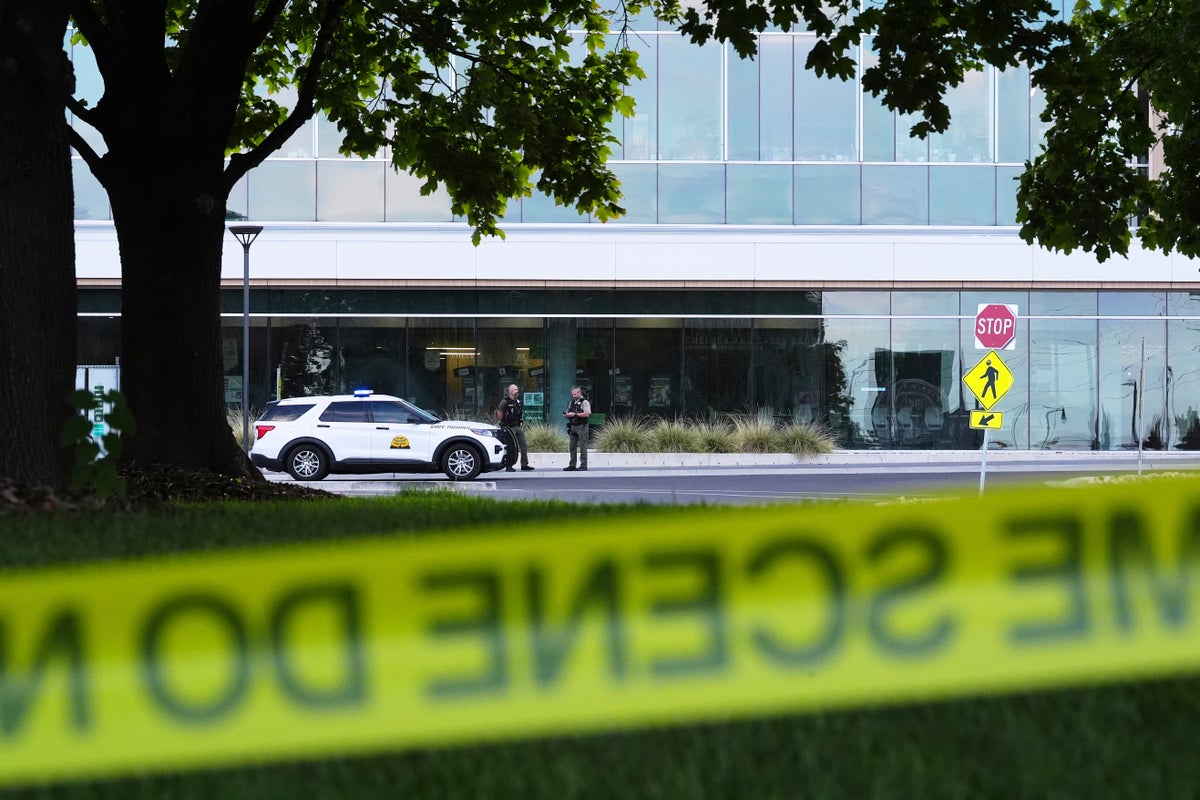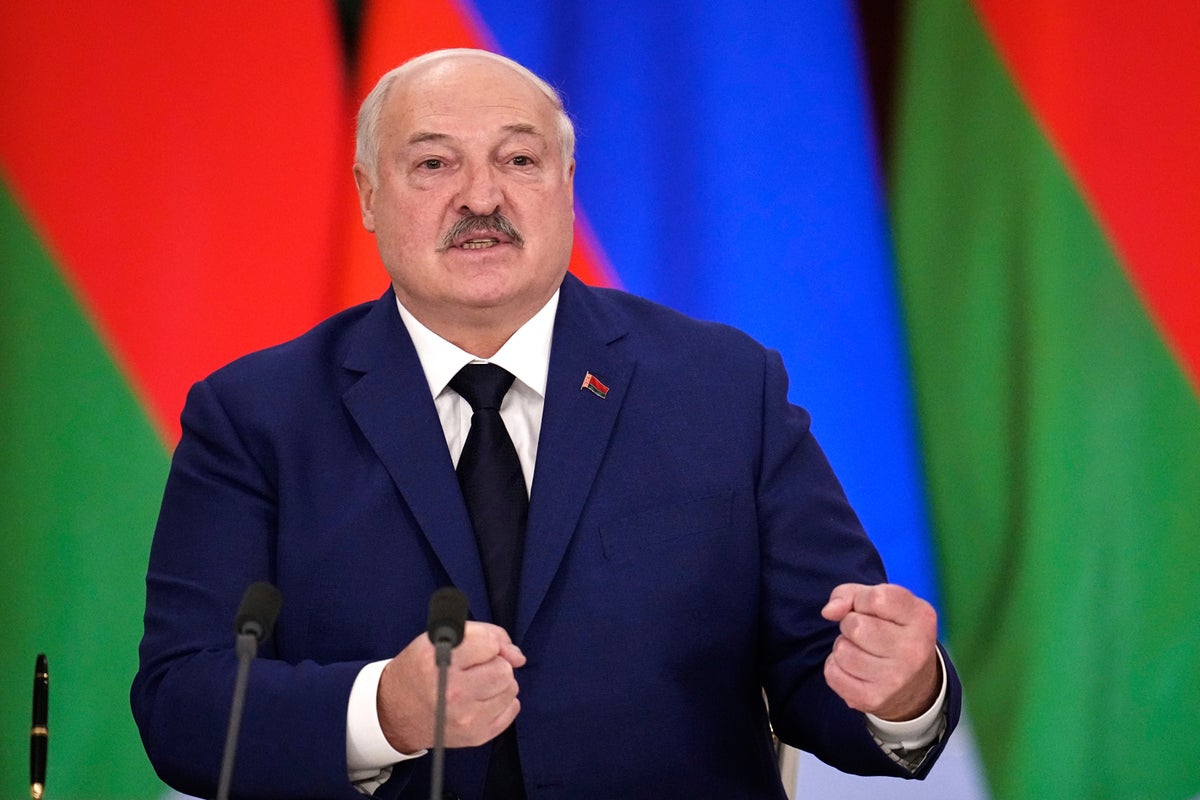Metsola hands Stefanchuk Protocol on opening of European Parliament Office in Kyiv



© PA Wire/PA Images




The Trump administration has approved weapons aid packages for Ukraine worth up to $1 billion, with NATO allies paying for American arms shipments to Kyiv rather than the United States funding the assistance directly.
Undersecretary of Defense for Policy Elbridge Colby approved up to two $500 million shipments under a mechanism called the Prioritized Ukraine Requirements List (PURL), two sources familiar with the situation told Reuters.
The renewed transatlantic cooperation aims to provide Ukraine with up to $10 billion worth of weapons.
The sources declined to provide a complete inventory of approved items but confirmed the packages include air defense systems. Ukraine requires these systems urgently given a huge increase in Russian drone and missile attacks.
“It’s the stuff they’ve been asking for. A lot of stuff,” one source told the news agency, adding that the flow has allowed Ukraine to “stabilize the lines thus far.”
Trump announced the initiative on 14 July, confirming the United States would provide Ukraine with weapons worth “billions of dollars” that European NATO allies would purchase and distribute. The president specifically mentioned preparing up to 17 Patriot air defense systems for shipment to Ukraine.
NATO Secretary General Mark Rutte described Trump’s decision as “quite logical” and said Trump called him on 10 July to explain that Ukraine should receive “everything necessary for self-defense,” but that Europeans should finance the assistance.
By 31 August, Ukrainian President Volodymyr Zelenskyy reported that seven countries had supported the PURL initiative, with total commitments reaching $2 billion. Defense experts indicate Ukraine’s requirements remain consistent with previous months, focusing on air defenses, interceptors, missile systems, rockets, and artillery.






Ukraine’s Armed Forces have received a fresh delivery of Patria 6×6 armored personnel carriers manufactured in Latvia, according to Latvia’s Ministry of Defense. The shipment included additional equipment for Ukrainian military personnel.
Latvian Defense Minister Andris Spruds emphasized his country’s commitment to supporting Ukraine’s fight for independence.
“Latvia continues to support Ukraine in its struggle for independence and will do so for as long as necessary,” Spruds said, highlighting that the Patria armored vehicles will enhance Ukraine’s capabilities against Russian aggression.
The Latvian Defense Ministry noted the strategic value of the deployment: “In the hands of Ukrainian defenders, these Patria 6×6 armored personnel carriers will be used in the most difficult combat conditions. This will also allow us to gain valuable experience to strengthen Latvia’s defense.”
Latvia responded to Ukraine’s request in February this year by ordering the Patria 6×6 armored personnel carriers specifically for Ukrainian forces. Riga plans to deliver 42 such vehicles to Kyiv, along with additional military equipment, according to the Defense Ministry.
The delivery forms part of a broader international cooperation framework. Finland, Latvia, Sweden, and Germany signed a joint agreement on 30 August 2021, for the procurement of Patria 6×6 armored vehicles under an intergovernmental program. The agreement covers orders for more than 200 units.
Previous reports indicate that the first vehicles from Latvia were already delivered to Ukraine’s 3rd Separate Assault Brigade of the Armed Forces.
The Patria 6×6 armored personnel carrier represents a modern multi-purpose combat vehicle developed by Finnish company Patria. The vehicle is designed for personnel transport and combat operations at the front line.
According to specifications, the armor meets STANAG 4569 standards and protects crew members from small arms fire, artillery shell fragments, and mine explosions. The vehicle’s powerful engine and independent wheel suspension enable it to traverse difficult terrain and water obstacles while reaching speeds up to 100 km/h on roads. The operational range extends to 700 kilometers without refueling.

Alex Babich, a 47-year-old Ukrainian immigrant, has set a Guinness World Record by growing a sunflower that reached 35 feet and 9 inches in his Fort Wayne, Indiana backyard.
The flower, nicknamed “Clover,” was officially measured and confirmed as the world’s tallest sunflower on 3 September, according to Guinness World Records.
The record-breaking sunflower surpassed the previous world record holder in Germany by 5 feet. Babich grew Ukraine’s national flower as a tribute to his homeland, which has been devastated by Russia’s invasion since 2022.
“I’m going to die someday, but the stories of this flower will live on,” Babich said. “My kids will be telling this story to the grandkids.”
Babich, who works as a landscape gardener, seed seller, and outdoor gear designer, immigrated to the United States at age 14 following the Chernobyl disaster. He began growing sunflowers seven years ago as a symbol of love for his home country.
The sunflower earned its nickname from Babich’s 10-year-old son, who would climb scaffolding around the plant and place four-leaf clovers on its leaves for good luck. Babich described the plant with paternal affection: “It’s one of my kids. You’re out there every day taking care of it.”
The official measurement drew a crowd of approximately 85 people, including master gardeners from a local university and representatives from the Allen County Department of Weights and Measures. A 40-foot cherry picker was used to measure the towering plant while Babich spoke by phone with Guinness World Records representatives and camera crews documented the event.
Babich’s first attempt at growing giant sunflowers seven years ago produced a 13-foot-tall plant. The current world record flower represents years of experimentation. “The record-breaking flower was the result of trial and error over the years,” Babich said.
His motivation for growing sunflowers intensified after Russia’s 2022 invasion of Ukraine. “We just pray that the war will end, that the killing will stop,” Babich said. “We just hope this inspires some people in the right places. It’s been long enough.”
The achievement will be featured in a documentary titled “Bloom,” scheduled for release this summer. For Babich, who describes himself as someone who grows giants, the record represents a personal milestone: “It’s very emotional. It’s as good as it gets for someone who grows giants.”



On the night of 17 September, Russia conducted another overnight attack on Ukraine using drones and missiles, targeting infrastructure facilities across multiple regions and causing power outages, railway disruptions, and property damage.
Ukrainian Air Forces reported that the attack involved an Iskander-M/KN-23 ballistic missile, an S-300 surface-to-air guided missile, and 172 strike drones including Shahed and Gerbera types.
Ukrainian air defense systems successfully intercepted 136 of the incoming targets, while military officials recorded impacts from missiles and 36 drones at 13 locations across the country’s north, south, and east.
The strikes caused significant disruption to railway operations, with Ukrzaliznytsia, Ukrainian major railway company, reporting that Russian forces conducted a comprehensive attack on electrical substations.
This resulted in delays for passenger trains on Odesa and Dnipro routes, with some services following altered paths and others halted at safe distances from impact zones.


Kirovohrad Oblast in central Ukraine experienced what officials described as a massive drone attack targeting infrastructure. The regional center and 44 settlements in Oleksandrivka community had lost partial electricity supply, according to the regional military administration head Andriy Raikovych.
The attacks damaged several private residences in Oleksandrivka and sparked fires that required overnight firefighting efforts involving more than 60 rescuers and 14 fire trucks.
Cherkasy Oblast in central Ukraine also came under drone attack, with regional military administration chief Ihor Taburets confirming damage to critical infrastructure.

Taburets added that regional defenders neutralized 11 Russian drones during the assault. The infrastructure damage led to additional passenger train cancellations and delays for routes passing through the region.
Emergency services across affected regions worked through the night to extinguish fires and restore services, with officials reporting no casualties from the overnight strikes.













© Copyright 2025 The Associated Press. All rights reserved.

© Copyright 2025 The Associated Press. All rights reserved



Nearly 50 trains delayed in Ukraine after railways infrastructure targeted by Russia

© AP






 |
Bloomberg thinks Putin finally went too far (he didn’t). Bloomberg asks if Putin finally went too far—we examine why it’s likely more of the same. |
 |
BBC: Ukrainian civilian freed after years in Russian captivity — his story is one of beatings, starvation, and survival. Journalist Dmytro Khyliuk spent three and a half years in captivity without charges before finally returning home in a rare swap. |
 |
Ukraine asks West to fund half its government as defense spending hits record 27% of GDP. $10 billion gap tests whether Western taxpayers can sustain Ukraine’s unprecedented military mobilization through 2026. |
 |
Ukrainian troops are on the attack in Sumy—and advancing. Moscow stripped troops from Sumy to double down on its attack in Donetsk. For Kyiv, that was an opportunity. |
Ukrainian troops are on the attack in Sumy—and advancing
Moscow stripped troops from Sumy to double down on its attack in Donetsk. For Kyiv, that was an opportunity.
“Deliberately terrorizing our people” – Russian strike on Zaporizhzhia kills 2, injures 20
Ukrainian officials call for more Western support for Ukraine’s air defence after another large-scale Russian aerial assault.
Frontline vs. drones: border guards of Ukraine share how to neutralize fiber-optic UAVs
Soldiers explained that sometimes even ordinary scissors are enough to cut the fiber cable and stop UAV.
Russian drone hits Kharkiv Pharmaceutical University, 4 injured in morning attack
A Russian drone strike damaged the roof of Kharkiv’s Pharmaceutical University and sparked a 150-square-meter fire.
Belarus claims it practiced deploying Oreshnik during Zapad-2025
Belarus announced it practiced deploying nuclear-capable weapons systems for the first time during joint military exercises that prompted 3 neighboring countries to seal their borders.
Ukraine unveils VATAG — a battlefield ground drone that can haul over 2 tons and stay quiet doing it
The robotic system blends logistics capacity with stealth operations using a hybrid drive and autonomous control.
Estonia is digging a 40 km trench to stop Russian tanks — and 600 bunkers are next
ERR reports the Baltic defense line project is already reshaping the southeast frontier.
Ukraine warns NATO: learn our drone war tactics before it’s too late
Ukraine’s drone war experience could save NATO from Russia’s next move.
Ukraine says it struck Russia’s Saratov oil refinery; sources claim Kstovo refinery hit too
The attacks are part of Ukraine’s systematic effort to cripple Russia’s ability to fuel its war.
Explosions hit military hub in Russia’s Vladivostok 6,600km from Ukraine
Ukrainian intelligence operatives conducted a sabotage operation in Russia’s Far East port city of Vladivostok, marking another strike over 6,600 km from the Ukrainian border.
Russians disguised as civilians stormed Yampil — Ukrainian forces turned their ambush into a trap
The 11 Army Corps reported that infiltrators hiding in homes and basements were blocked and neutralized.
Ukrainian Forces strike at Russian command posts in Donetsk Oblast after Russian defense minister’s visit
Ukraine targeted Russian command locations that Defense Minister Andrei Belousov had inspected in late August, striking the military posts on 8 Sept. and hitting personnel including command staff.
Frontline report: Russia’s Pokrovsk offensive collapses into chaos — Ukrainian forces seize the moment and liberate Udachne
The long-hyped campaign ended with scattered assaults and troops abandoning vehicles in panic.
Russia’s new attack drone full of American, European, Chinese components – Ukrainian intelligence
Russia’s new Geran-3 attack drones incorporate dozens of foreign-made parts, showing Moscow still has access to Western technology despite sanctions.
From Telegram to YouTube Comments: Tracing Russian narratives about Ukrainian politician’s murder
Identical narratives blaming Ukrainian leadership for Andriy Parubiy’s murder appeared simultaneously across Russian Telegram channels and in thousands of comments on Ukrainian YouTube videos.
War in Ukraine could end within months if Europe targets Russian oil buyers, US treasury chief says
Scott Bessent believes the war could be over in 60 or 90 days if Europe imposes tariffs of 50% to 100% on China and India.
Polish authorities detain 21-year-old Ukrainian, 17-year-old Belarusian for drone flight over government district
Two young foreign nationals face aviation law violations after flying a drone over Polish government buildings and the Belvedere Palace.
ISW: Kremlin escalating rhetoric, threatening NATO states in parallel with the kinetic escalation
Russian Security Council Chairperson Dmitry Medvedev warned on 15 Sept. that NATO enforcement of a no-fly zone over Ukraine would constitute a declaration of war.
Czech ammunition initiative for Ukraine faces political opposition despite delivery success
Former PM Andrej Babiš has branded the Czech Republic’s Ukraine ammunition initiative “rotten” and vowed to scrap the program if his ANO party wins October’s parliamentary elections.
“He understands only force”: Zelenskyy warns Putin plays Trump to escape punishment
The Ukrainian President warned that Russia’s goal is to weaken sanctions, not to end war.
A drone flew over Poland’s presidential residence — two Belarusians are now in custody
The State Protection Service neutralized the device after spotting it above Belweder and nearby government buildings. The incident unfolded on the same day Zapad-2025 military exercises intensified across the border.
Trump’s push to warm relations with Belarus may save Russia’s dying aviation fleet
The lifting of sanctions could let Minsk feed components straight into Moscow’s grounded aircraft.
Ukraine asks West to fund half its government as defense spending hits record 27% of GDP
$10 billion gap tests whether Western taxpayers can sustain Ukraine’s unprecedented military mobilization through 2026.
76% of Ukrainians believe they can defeat Russia with proper western support, poll shows
KIIS survey data shows 81% of Ukrainians believed in front-line success in September, while 76% now express confidence in overall victory against Russia.
210 Russian facilities identified in systematic “re-education” of Ukrainian children, Yale study reveals
Ukrainian children deported to Russia learn to throw grenades and operate drones at 39 facilities, while 130 others force pro-Russian programs, Yale University study reveals.




A study by the Humanitarian Research Lab (HRL) at Yale University’s School of Public Health has identified 210 facilities in Russia and occupied Ukrainian territories where children abducted from Ukraine are held and “re-educated.” The report also found evidence that some children are being militarized.
“Russia has been engaged in the deportation, re-education, militarization, and coerced fostering and adoption of children from Ukraine since at least 2014 in the temporarily occupied territories of Crimea, Luhansk, and Donetsk. Following the full-scale invasion of Ukraine by Russia in February 2022, these efforts significantly expanded in scale and scope. Cohorts of children were rapidly included in the Russian Federation’s pre-existing program of Russification from newly occupied regions such as Zaporizhzhia, Kherson and cities such as Kharkiv and Mariupol.” – the report reads.
The majority of the facilities identified in the report are located in European Russia and occupied Crimea.
Children are being held in camps and sanatoriums (most frequently), as well as cadet schools, a military base, medical facilities, a religious site, secondary schools and universities, a hotel, and family support centers and orphanages.
Researchers found that re-education activities occurred at 130 sites (62%), involving cultural, patriotic, or military programming aligned with pro-Russia narratives.
Militarization programs were observed at 39 sites (19%), and 49 sites (23%) have been expanded or newly constructed, including two new cadet schools, likely to accommodate more children.
More than half of the facilities (106 of 210) are managed by the Russian federal or local government, including 55% of re-education sites and 58% of militarization sites.
Children in these facilities fall into four main groups:
The report urges international organizations and governments to support the return and reintegration of Ukrainian children, hold perpetrators accountable, and strengthen protections to prevent such abuses in the future.
“The impact of the alleged crimes perpetuated by the Russian government are likely to leave generational scars,” the report concludes.
The systematic abduction of Ukrainian children has accelerated since Russia’s 2022 invasion, building on practices begun in 2014 in occupied Crimea, Donetsk, and Luhansk.
Over 3,000 children from occupied Kherson Oblast were taken to remote Russian regions during summer 2024 alone. Separate documentation identified 40,000 children relocated to various Russian locations including Moscow, Saint Petersburg, and facilities as far as 8,000 kilometers from Ukraine.
The International Criminal Court issued arrest warrants in March 2023 for Russian President Vladimir Putin and Russian Children’s Rights Commissioner Maria Lvova-Belova on charges of illegal child deportation.




© Copyright 2025 The Associated Press. All rights reserved.

Ukraine’s Main Intelligence Directorate (HUR) published a detailed analysis of Russia’s new turbojet attack drone, the Geran-3 “U” series, showing it relies heavily on foreign components. The drone, a localized version of the Iranian Shahed-238, incorporates parts from the US, China, Switzerland, Germany, Britain, and Japan.
Despite Western sanctions, Russia continues to acquire foreign technology for its weapons programs. Moscow remains able to develop and produce advanced weapons systems for its war against Ukraine.
In total, 45 foreign components were identified in the new Russian Geran-3 drone:
HUR reports that the drone can operate at ranges up to 1000 km, and can reach speeds of 300-370 km/h, powered by a Chinese Telefly JT80 turbojet engine.
It can reach its top speed in areas covered by Ukrainian air defenses, electronic warfare systems, and drone interception zones, and during the terminal stage of its flight descending towards a target.
To maintain satellite navigation in contested areas, the Geran-3 also features a jam-resistant navigation system with a 12-element adaptive antenna array known as Kometa-M12.
The drone’s internal layout closely mirrors that of the gasoline-powered Geran-2, including a standard inertial navigation system, air pressure measurement unit, and power distribution unit. The drone also uses cameras and video systems adapted from earlier Geran-2 models.
Russia’s Geran drone is a locally made version of the Iranian Shahed drone, supplied by Iran and used against Ukraine. Moscow is producing its own variants and gradually improving their design and capabilities.
Russia uses these drones to carry out long-range attacks on Ukrainian targets, including civilian areas and critical infrastructure.
HUR published the findings as part of its “Means of Destruction” series, which now catalogs over 5,000 foreign components in 177 weapons systems used by Russia and its allies. The Geran-3 is the eighth Russian weapon system to be detailed in the series.
